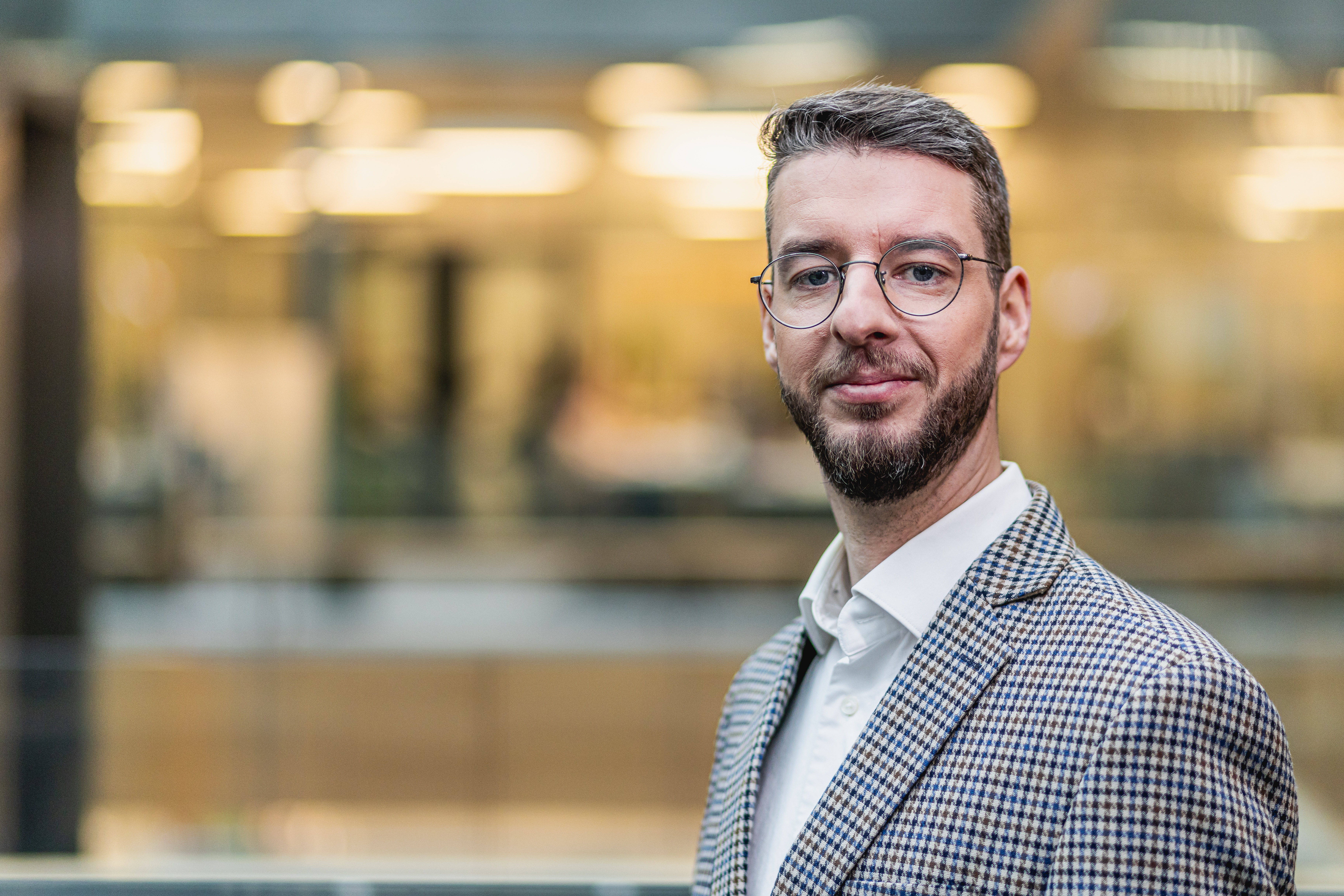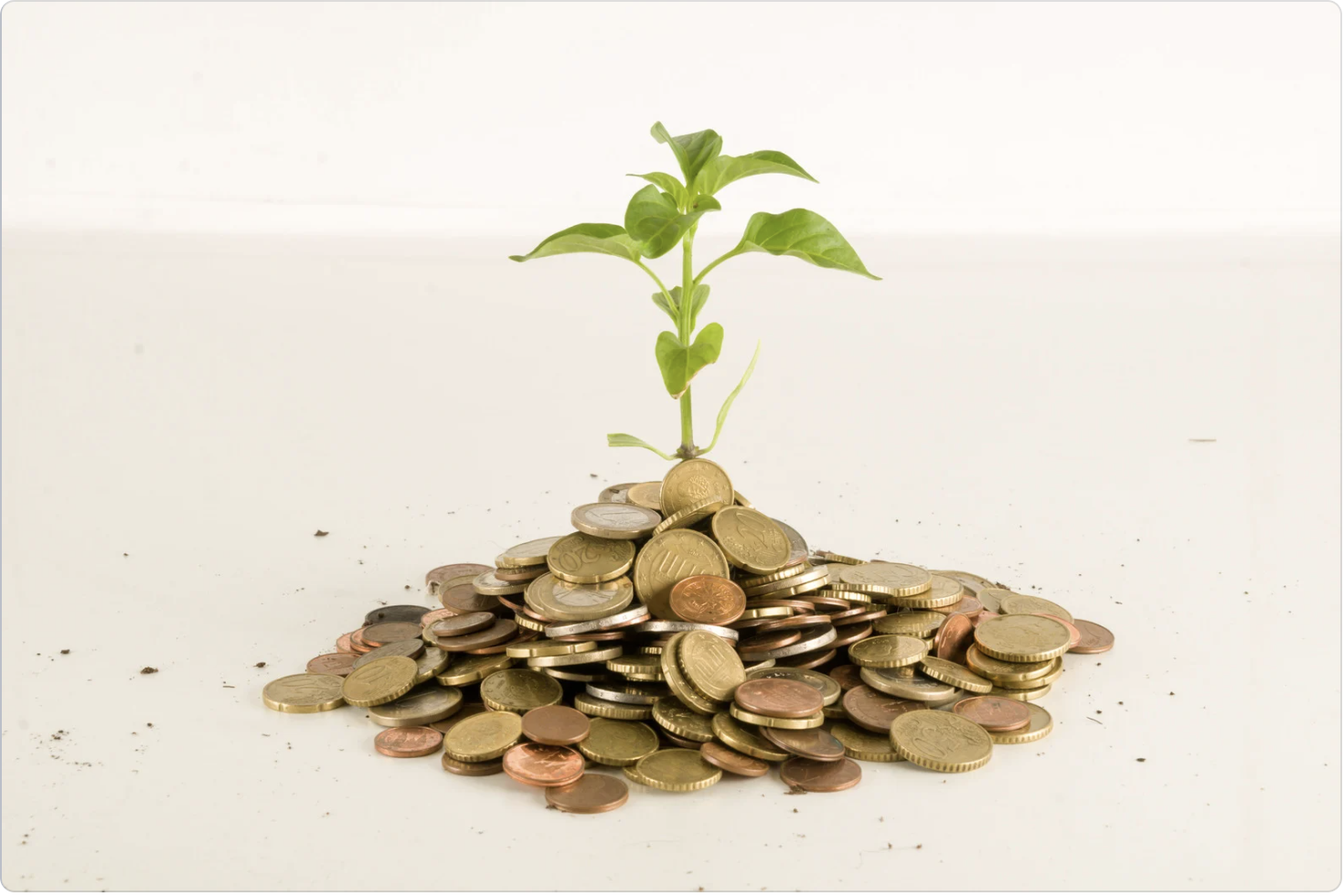More than 120 farmers have already benefited from interest-free Green Loans to improve farm sustainability. Fertiliser and fuel prices, climate change and Europe's Green Deal are all pushing for a shift towards more sustainable farming. We talk to Andrius Liukaitis, Head of Lending and co-founder of the Lithuanian climate technology company "HeavyFinance", about the next generation of financing for farm development.

There are plenty of names associated with the color green. How closely is your investment product – the green loan – linked to sustainable farming?
It is fully connected. Farmers are on the front lines of the fight against climate change. They want to transition to more environmentally sustainable farming methods but often lack the necessary capital. We believe that with Green loans, we have found a way to push the entire sector toward sustainability. “HeavyFinance” provides loans at 0% interest to farms that apply sustainable farming practices or are transitioning to no-till farming or other sustainable soil management practices. I think it’s hard to find a similar product in the market right now.
What criteria does a farm have to meet to qualify for a Green Loan?
Those who want to change their farming practices with a Green Loan or strengthen the good sustainable farming practices they already apply. The goal of the Green Loan is to provide capital for the transition to environmentally and globally friendly farming. We focus on farmers managing 40 hectares or more. Along with capital, we provide farmers with consultations from independent agronomists to ensure a smooth transition to more sustainable farming and to help the soil accumulate more organic carbon.
How does the green lending mechanism work?
The mechanism is the same as for any of our loans. After receiving a farmer’s enquiry, we get in touch to clarify the needs and assess the creditworthiness and risks of the farm. Next, we sign the loan and carbon certificate agreements, transfer the loan amount and start planning soil sampling and advice.
Farmers can get a 0% loan with no EURIBOR (European Interbank Offered Rate) and no high commissions on the carbon emission certificates generated on the farm.
By the way, a farmer can only receive a Green Loan once. Once the loan is repaid, the land continues to sequester the coal and the farmer receives additional income from the land. In order to take out a second green loan, the farmer needs to have land that has not been ‘part of’ the project.
How will a farmer get carbon certificates?
First, the farmer’s fields are registered and analysed to see how much arable land, forests, roads, etc. they contain. Once all useless areas are eliminated, the process for carbon certificates goes as follows:
- We take soil samples to find out how much carbon is in the soil and what its carbon storage potential is.
- We advise the farmer on the best practices to increase the soil’s organic carbon storage.
- We use satellite data throughout the period between measurements to monitor whether everything is going well. After 2-3 years, we take soil samples again from the same parts of the fields and look at the change in organic carbon.
- We keep all soil samples and document the processes so that, if necessary, it can be proven that the organic carbon has been stored underground.
- We call in independent auditors to make sure everything is correct and in order.
- After the audit validations, we submit the findings to VERRA, a non-profit organisation in the United States, which decides whether to issue carbon credits.
Is there an administration fee during the loan period? If yes, what is it?
Like other financial institutions, we charge a set-up fee. It depends on the risk, the term of the loan and can range from 3% to 5%. Over the life of the loan, the administration fee covers the salaries of the scientists, laboratory tests, certification costs, reporting to international organisations, system development and other costs.
"HeavyFinance" has been operating for just four years. How many green loans to small and medium-sized farms have been financed through the platform in this period? For how much? And to whom do farmers most often borrow?
Yes. We have only recently started operations, but more than €50 million of agricultural loans have already been granted through the company’s platform. Serving small and medium-sized farms, “HeavyFinance” has already issued more than 1,700 loans to farmers who face difficulties in accessing finance from traditional financial institutions for sustainable agricultural development i. Farmers usually borrow to buy machinery to switch to arable farming. Also for working capital. We all know that farming is a very capital-intensive business. Money revolves: once you have it, you have to buy something again, and so on. Then you wait for the harvest, and it is a vicious circle.
Well, the loan will still have to be repaid. What about the timing of repayments - can they be made when income is received, e.g. when a crop is sold or benefits are received?
Even when it comes to conventional lending, we take a very flexible approach. Repayments of the main loan instalments are determined according to the farmer’s income cycle: if a grop farmer receives income in autumn, the instalments are scheduled to be paid at that time. Meanwhile, interest payments are made monthly.
When farmers take out simple loans with us, they pay only the interest, and pay the credit part when they earn income. In the case of green loans, small payments are made monthly and larger repayments are made according to the farmer’s income cycle.
Can I still earn extra income from the organic carbon stored in the soil after the 0% loan is repaid? If so, how much longer would it be possible to earn?
After repayment of the loan, the farmer becomes the beneficiary of the sale of the carbon certificates, i.e. he becomes a shareholder. As long as the farmer has a loan, “HeavyFinance” and the investor receive the income from the sale of carbon certificates. Once the farmer has repaid the loan to the investors, the farmer replaces the investor in this mechanism. He then receives the income. The project allows the farmer to receive it for 100+ years. This is roughly the period for which the land can store carbon, although it could be longer, depending on the state of the fields.
This source of income can be passed on from generation to generation. It looks at the size of the land and its capacity to store organic carbon. At the same time, of course, there is an obligation to look after the land – to work it so that it can continue to store carbon. It is a long-term source of income, so even if the land is sold, the buyer can re-sign the contract and continue carbon farming.
What determines the price of a carbon certificate?
Carbon certificates are bought by multinational companies that seek to offset CO2 emissions by directing capital towards activities that reduce emissions. Demand for carbon certificates has grown exponentially over the past few years, in some cases increasing from €10 per certificate in 2020 to €35 in early June 2022. This significant price spike is due to the small number of initiatives that can create carbon certificates and the rapidly growing demand for them. We foresee further growth in this market and an increase in the price of certificates that would benefit Lithuanian farmers. This is also reflected in various analyses by international institutions.
The price of a carbon certificate depends on many factors. For example, market dynamics: how many credits are available on demand and supply. If there are more buyers than sellers, the price rises. The type of certificate and the certification body are also important. “HeavyFinance” has chosen a methodology that meets the highest standards, works with world-class scientists and laboratory testing to produce high quality carbon certificates.
What's better: future returns from carbon credits or zero-interest loans but now?
It depends on the farmer. We’ve had a variety of experiences in our company practice. I would say that if you are a farmer with good practices and you don’t need additional capital, you can join a carbon farming programme and get a return on your carbon certificates without taking out a green loan.
If capital is needed for transformation and transition, of course a zero-interest loan is needed. Then you start converting from day one, and within 3-4 years you repay the loan and become a shareholder in the proceeds of the sale of the carbon certificates
Let's say a farmer joins a carbon farming programme without a Green loan, how long will it take for the first carbon certificates to be generated and for the farmer to receive additional income?
First, we measure how much organic carbon the soil has accumulated since joining the Carbon Farming Programme. Then we re-test every couple of years to measure the difference and contact the international organisations that issue the certificates. There is no administration fee for those who join the Carbon Farming Programme without a Green loan, and the first income is generated a couple of years after signing the contract.
What would help a farmer decide whether to take out a Green loan or join a carbon farming programme?
Currently, only a small proportion of farmers take up the opportunity to receive a zero-interest loan or to receive additional income for switching to more sustainable farming. This is an opportunity to increase the financial stability of the farm, get advice from independent agronomists and increase the amount of organic carbon in the soil, with the highest returns going to the earliest farmers who join.
Climate change, the Green Deal, fertiliser and fuel prices, and modern technology are putting pressure on farmers to move towards more sustainable practices, and this will become inevitable in the future. We propose to take this step together, taking advantage of the benefits of generating carbon emission certificates.
Thank you for your insights.

